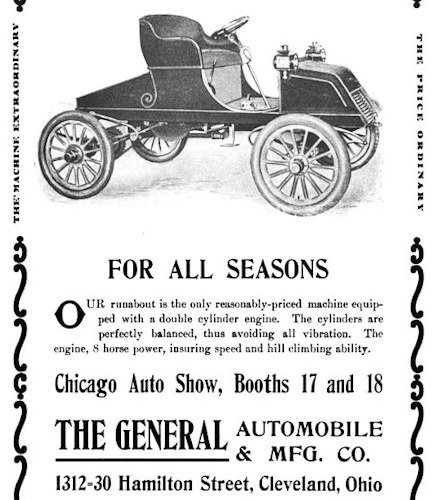General Automobile & Manufacturing Company

The Hansen Automobile Company, and later as General Automobile & Manufacturing Company, was an early American car manufacturer from Cleveland in Ohio, from 1902 to 1903. The brand names were Cleveland, Hansen and General.
History
Rasmus Hansen created the Hansen Automobile Company in 1902. He was a Danish immigrant who arrived in the United States when he was 18 years old. The automobile he built was a solidly made Voiturette runabout with a 6 HP single cylinder engine that was exclusively offered in the design. Cleveland was the name given to the earliest cars.
The Hansen sold quite well. In September 1902, the company was reorganized as General Automobile & Manufacturing Company. The background was a planned capital increase to finance larger investments. This went hand in hand with the new brand name General, an upgraded vehicle with 8 HP power for US $ 900, - and a new 14 HP two-cylinder model, which cost US $1000. The withdrawal of investors led to the bankruptcy of General Automobile & Manufacturing Company in September 1903. After that, 25 started vehicles were completed. These were acquired by the Studebaker Brothers Manufacturing Company in October, including the equipment and inventory.
A modern attribute of all vehicles was an inclined radiator mounted on the car front. Behind it was a storage room that probably contained the water tank and was a bit larger in the General models. The Hansen HP 6 was a typical motor buggy with a water-cooled single-cylinder engine, which was mounted transversely to the travel direction under the seat. General 8 HP and General 14 HP were two-cylinder models. It is known from the 6 HP that the four-stroke engine had a 4½ inch (11.43 cm) cylinder bore and a 5¾ inch (14.605 cm) stroke 1.5 litres. The power transmission took place on all models by means of drive chain on the rear axle It was optionally delivered with wire spokes or artillery wheels. [For the General models, a wheelbase of 78 inches (1981 mm).


